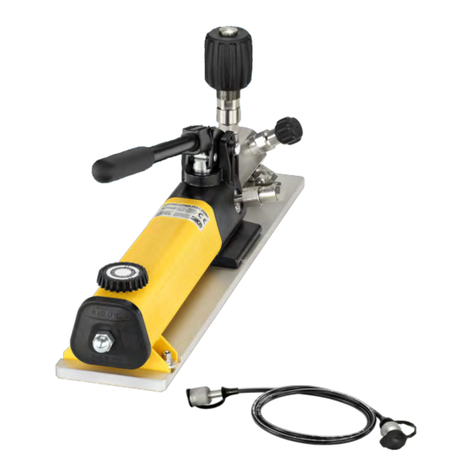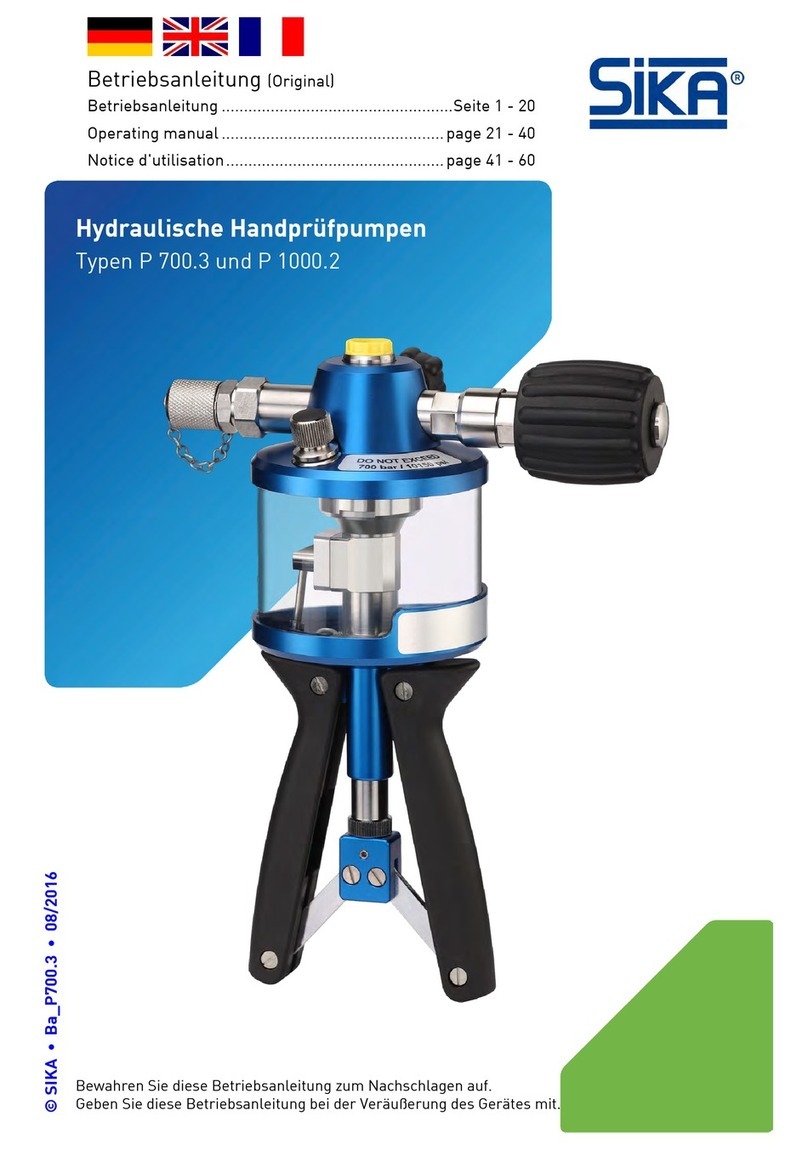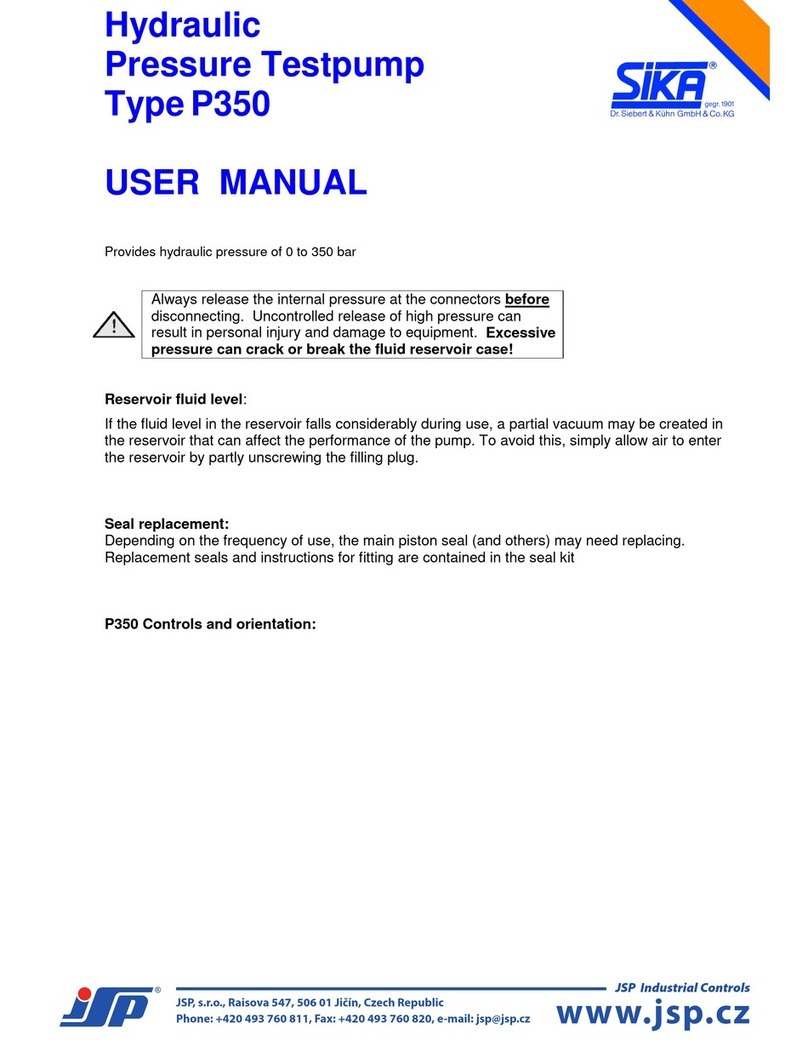Safety instructions P4
© SIKA • Ba_P4 • 04/2014
2Safety instructions
Before you install the P4, read through this operating manual carefully. If the instruc-
tions contained within it are not followed, in particular the safety guidelines, this could
result in danger for people, the environment, and the device and the system it is con-
nected to.
The P4 correspond to the state-of-the-art technology. This concerns the accuracy, the oper-
ating mode and the safe operation of the device.
In order to guarantee that the device operates safely, the operator must act competently and
be conscious of safety issues.
SIKA provides support for the use of its products either personally or via relevant literature.
The customer verifies that our product is fit for purpose based on our technical information.
With this verification all hazards and risks are transferred to our customers; our warranty is
not valid.
Qualified personnel:
The personnel who are charged for the installation and operation of the P4 must hold a
relevant qualification. This can be based on training or relevant tuition.
The personnel must be aware of this operating manual and have access to it at all times.
General safety instructions:
In all work, the existing national regulations for accident prevention and safety in the
workplace must be complied with. Any internal regulations of the operator must also be
complied with, even if these are not mentioned in this manual.
Never use the pressure pump together with an external pressure source. Do not attach
an external pressure generator to the pressure pump.
Do not remove any attached components (test item, pressure hose, reference gauge)
when the pressure pump is under pressure:
Open the pressure relief valve before removing any of the components.
Do not use Teflon tape to seal the pressure connections. Surplus Teflon tape can enter
the pressure pump and damage it.
Only use adapters and seals that are available as accessories.
Non-pressurised storage: Only store the pressure pump with the pressure relief valve
open. This ensures that no pressure can be built up by unintentional pumping move-
ments.
Avoid external force of all kinds towards the pressure pump and its operating elements.
Do not use the pressure pump if it is damaged or defective.
Special safety instructions:
Warnings that are specifically relevant to individual operating procedures or activities can be
found at the beginning of the relevant sections of this operating manual.






























